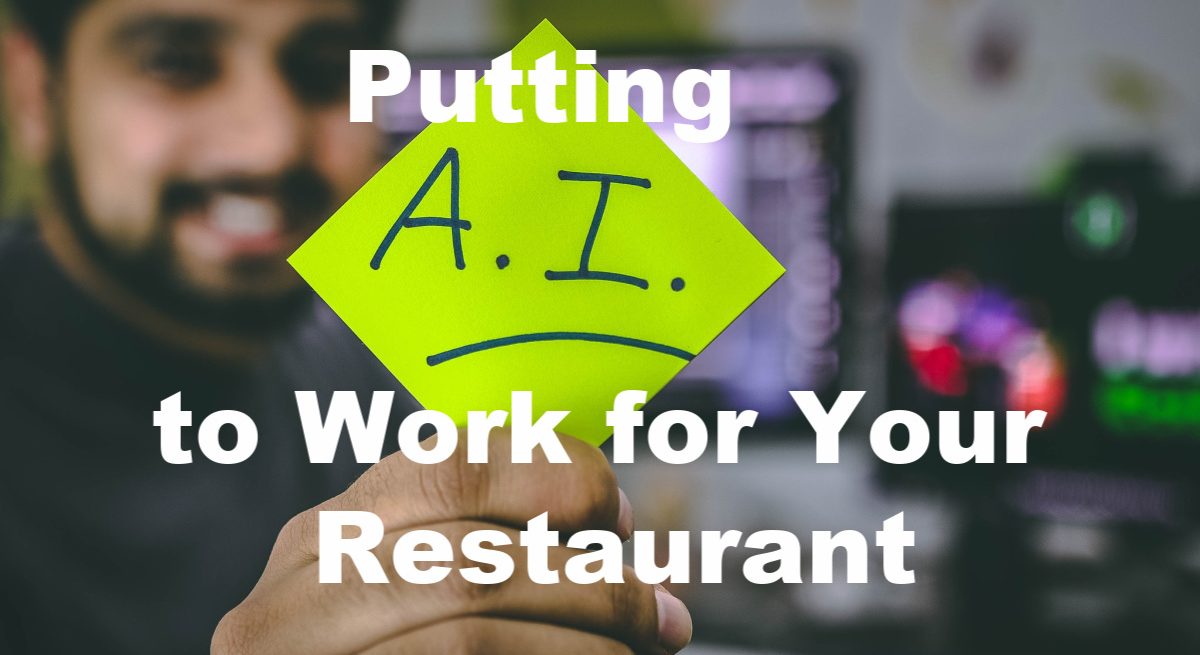How AI Can Work for You
5 Min Read By Syd Bishop
When you think of artificial intelligence, you might think of examples from science fiction like Terminator or The Matrix. Modern AI exists without the limitations that you see in movies, operating on everything from the smartphones in your pocket to the website that uses machine learning to track COVID-19. Artificial intelligence was designed to solve for specific tasks and has applications that can dramatically impact the bottom line in your restaurant, from automating features to the burger-flipping robots of the future. As we look into an uncertain future, the opportunities to employ artificial intelligence to automate your restaurant is an excellent way to put AI to work for you.
Communications
As the coronavirus has taught us, a robust communications network is critical to ensuring that everyone is kept aware of changes. With restaurants pivoting to delivery only or curbside operations around the globe right now, getting this information to your customers is critical to spreading the word. And artificial intelligence can field a lot of the frequently asked questions that might come in from the outside world. Let’s take a look at a few that can directly benefit you today.
Chatbot
Chatbots are everything from online simulations to Alexa, assistants who in this case are designed to help connect restaurants with customers around the clock. You’ll find a chatbot on the internet, which is how the majority of guests engage with your restaurant before getting in touch. A chatbot gives a voice to your website that can address the most common concerns that come in or to direct your guests to the appropriate place for an answer.
Interactive Voice Response System
If you’ve ever called any business, then you’ve likely encountered an interactive voice response (IVR) system. An IVR is a digital operator that fields your calls. Like a chatbot, an IVR can learn from your requests and evolves to become more and more conversational. While an IVR might not fool the Turing Test, it does satisfy the basic needs that a customer might have and can be designed to field general questions or even take incoming orders, freeing up your staff to perform other tasks.
Restaurant Logistics
For your restaurant, communications are limited to the closed circuit of your business, from the front-of-house to the kitchen. Where once that was handled by runners who would communicate information by hand or word-of-mouth between areas of the restaurant, now that’s taken care of through a centralized communications hub that connects everything from your guest management platform to your kitchen display system. Through automation, AI streamlines your business needs by rendering them routine.
Staffing
In some cases, restaurants can use AI to fill gaps in your staffing. Examples of using artificial intelligence to help staffing needs are anything from a recipe viewer, to smart kiosk technology that anticipates customer needs. But more on that later.
In terms of your on-premise preparation, you can use AI to help plot peak traffic dynamically through historical data. Through data analytics, restaurateurs can determine what their in-house staffing needs might be, and then work to ensure you have what you need.
Dynamic Reaction Time
While we’re all practicing social distancing at the moment, the average party size in restaurants is around four people. A common complaint among 66 percent of guests is inconsistent temperatures in their food. Sometimes that means that food comes out too hot when another order comes out too cold. Some KDS platforms provide dynamic reaction time, which pads orders relative to your capacity to ensure that all orders come out simultaneously fresh and hot. For example, if traffic is backing you up, dynamic reaction time will add a little time to each order to ensure that you drop all of your items at the right time to ensure quality and freshness, but less time if you’re ahead.
Capacity Management
Relative to dynamic reaction time, capacity management looks at the whole picture in your restaurant to determine the maximum output that your operation can sustain without a loss in quality. Some KDS platforms support this feature, which is especially useful when you’re juggling on and off-premise foot traffic.
Reduce Food Waste
Every year in the U.S., between 125 and 160 billion pounds of food is wasted, which is a costly and destructive dilemma. The good news is that AI can help decrease food waste through bin management. Bin management is a feature of some KDS programs that reminds staff when to drop the appropriate items by utilizing data analytics to plot your future needs. The result is less unnecessary leftovers, as the algorithm measures only what you need and when you need it.
Engineering the Perfect Menu
While artificial intelligence is nothing new, we’re still relatively at the dawn of AI technology. Because of that, some of the existing technology seems like science fiction, when it’s already science reality. For example, some major chains have developed AI designed to craft new flavor combinations and recipes.
While some AI tools create new recipes, others exist to enhance the individual experience. One major chain recently employed AI to personalize customer menus, one more step in putting AI to work in your restaurant.
Food Safety
Food Safety is and always will be a big deal, but one recently underscored by the coronavirus crisis. Keeping your food safe and secure is everything from freshness and projected expiration dates to tracking your food to specific points of origin to determine where/when problems may have happened and discontinue them accordingly. Fortunately, AI tools that address food safety are currently out there and ready to help you determine any potential source of trouble, or to spot it ahead of time.
Robo-Staff
As mentioned, the robotic staff is what you might imagine when you think of AI. But sometimes the truth is stranger than fiction, and now some restaurants are doing just that. From robots that flip your burgers to waitstaff, your robo-staff is coming. Whether or not a team of robots in your kitchen practical is yet to be seen, but the potential is there, and every year robot technology will become more and more available for use. Whether that’s on your staff or part of your future delivery platform, this AI that serves as a visceral reminder that we live in 2020.
Reading Your Mind
One of the wildest things you’re likely to read, McDonald’s and a few other places are looking into technology that looks at you as you look at it. The idea is to “read your mind” or at least to use your eye movements to anticipate your potential order choices. Imagine having a drive-thru window and an indecisive guest. AI that reads your eye movements "intends" to help predict and suggest orders, enhancing your speed of service, and potentially raising your bottom line.
Whether it's through the internet, in the kitchen, or a face-to-face server-bot, AI stands primed to create more opportunities with less capital. AI has the potential to humanize your restaurant by freeing staff from the minutiae of their regular tasks to engage with guests. Ai is an investment in tomorrow that allows operators freedom through automating tasks, and by providing in-depth, analytical insights at data.


